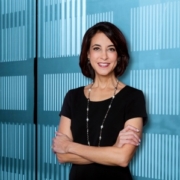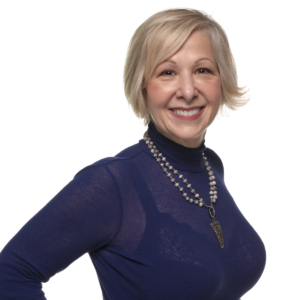Women Leaders Discuss Investment Management in Uncertain Times
 Last week The Glass Hammer hosted its 6th annual Top Women on the Buy-Side Breakfast. The lively discussion gave way to even livelier networking, as senior women across the investment management industry mulled over the question, “Where do we go from here?”
Last week The Glass Hammer hosted its 6th annual Top Women on the Buy-Side Breakfast. The lively discussion gave way to even livelier networking, as senior women across the investment management industry mulled over the question, “Where do we go from here?”
Our panel included Jane Buchan, PhD, CAIA, Managing Director and CEO, PAAMCO; Michelle Meyer, Senior U.S. Economist, Bank of America Merrill Lynch; Leah Modigliani, Senior Vice President, Investment Strategy and Risk, Neuberger Berman; Ranji Nagaswami, CFA, previously Chief Investment Advisor to Mayor Bloomberg, City of New York; and Anjun Zhou, PhD, Managing Director and Head of Multi-Asset Research, Mellon Capital. Each shared her point of view on where the markets are going and how to deal with inflation and risk moving forward.
Our moderator, Heidi Moore, US Finance and Economics Editor at The Guardian, began, “Previously, we’ve always had a crisis to talk about.” But this time, the biggest factor facing women on the buy-side is uncertainty. “What is important to know about the markets,” she asked, “when so much is unknowable?”
Uncertainty
Meyer kicked off the debate with her views on the housing market. “We’re in a unique business cycle, as we all know. We’ve been seeking an economy that is able to escape velocity and it’s been a tough road so far, but we are starting to see a glimmer of hope, particularly in the housing market.”
Home prices are up, she continued, as are home sales, and that “generates a positive feedback loop in the whole economy.”
On the other hand, the US is still facing underutilization in the labor market, Meyer said. She anticipates that the Fed will continue to engage in quantitative easing through the year, and then perhaps begin tapering in the spring of next year.
Zhou said that while there is certainly a bit of uncertainty out there, it isn’t insurmountable. “For those of you who are James Bond fans such as myself, I like the analogy that the global economy is shaken, not stirred.”
She explained that many economies around the globe have developed a soft patch, with growth slowing down and inflation under target. “In such a backdrop, central banks from both the developed markets and emerging countries are expected to be further monetary expansionary, which is in turn supportive of the risk assets.”
Modigliani also remained cautiously optimistic. “We are at a very peculiar time in the markets. Fixed income returns may well be negative in the next year or two as yields are eventually likely to normalize and move higher. Current interest rates are at all-time lows yet investor demand in the high yield market seems to go on and on!” she said. “Companies can still access the credit markets, so we have not seen an increase in bankruptcies that might otherwise have occurred. Over the past year or two there has been a lot of interest in equity-like bonds, such as high yield. Now investor demand seems to be headed for bond-like equities. Defensive consumer stocks, healthcare, and utility stocks are outperforming the more cyclical and normally higher volatility market strategies.”
She added, “How this all shakes out is the question. I’m fairly optimistic on the US economy, but it is definitely an unusual time.”
Buchan continued, “Thinking back to nine months ago, everyone was very pessimistic. In the time since, the bond market hasn’t done much, commodities with the exception of natural gas hasn’t done anything, equities, with the exception of the Japanese equities market, haven’t done anything. In a solid recovery, we would expect the small cap market to be crushing the large cap market. But the real surprise is that attitudes have changed.”
“There’s a sense of euphoria out there.”
There is still risk in the system, Nagaswami said. “A lot of this has simply been coming back from the abyss. Risk is not out of the system by any means, but what the markets have priced in is that risk is more understandable.”
Managing Risk
“I don’t think we’re at a peak in stock market levels,” Nagaswami continued. “The risk here is if you’re on the sidelines too long.”
Going back to the housing market, Buchan explained that as a resident of Orange County, California, she’s seeing a bubble begin to take shape – in terms of risk, it could be something to watch for. “Not only are prices up, people are bidding all cash at five to ten percent over the asking price. If that’s not the definition of a bubble, I don’t know what is.”
But, she said, she believes Federal Reserve Chair Ben Bernanke will try to avoid a crash. “He’s not going to let the housing market crash on his watch. We may see an attempt to deflate things a bit.
Nagaswami said her views on risk have changed over the course of her career. “My perspective shifted 180 degrees when I moved to the client side. What matters is the entire picture of your asset portfolio. The holistic view on risk is that as a global pension system we are massively imbalanced. Portfolios were created for high growth, low interest environments,” she explained. “We need to start at the highest level. What are realistic return expectations, what level of down side risk should investors tolerate, what is the environmental exposure of your portfolio to surprises in growth and inflation? We must be thinking about things like these in our portfolio moving forward.”
The bond market is an area Zhou is keeping a close watch on. “The next likely bubble we must pay attention to is the bond bubble. Since 2009, the US national debt has increased by around $1 trillion per year, and that does not include the $85 billion dollar per month open-ended bond purchases.”
Modigliani suggested that a closer look at the difference between institutional and individual investors may also be important. “On average individual investors tend to spend more time looking in the rear-view mirror, or licking their wounds rather than anticipating what will come next. As a result individual investor performance tends to be significantly worse than market indexes would suggest because individuals tend to get in and out of the markets at exactly the wrong times – buying when markets are high and selling when markets are low. This compounds the difference we see in the performance of institutional versus individual investors.”
“We should be putting the past behind us more quickly, to avoid being stuck looking back. This will be key to the success of individual investors. While institutional investors have been shifting allocations to take advantage of niche market strategies, individuals tend to change allocations only after newer market trends are very well established. Moving from bonds to equities at this point means already having missed out on an extraordinary climb in the markets to date. A big swing up in bond prices could cause people to jump further and at the wrong time. Although I currently favor equities over fixed income in general, I worry about the average investor chasing past performance by piling into these bond-like stocks at this point.”
Conversely, she continued, “For institutions, we are seeing more niche investment strategies like mortgage loan restructuring or floating-rate private market debt. There are more creative things going on across the landscape for Institutions. But average investors don’t usually have access to these more specialized and often private, rather than public, market opportunities.”
Buchan added that sovereign wealth funds are seeing an increase in investment. “One of the interesting things from where we sit is that we have to look at what’s happening in the investing community, particularly the rapid growth of sovereign wealth funds, which have a very risk averse strategy because they don’t want to lose money. That might make the bond markets look like a bubble compared to the markets of several years ago.”
Nagaswami suggested that portfolio managers would benefit from going back to basics. “The complexity of where we are, for me, means simply one thing – go back to first principles. Private investors as well as institutional CIOs should rethink fundamental investment decisions. Do something as simple as separating beta from alpha decisions. What is the neutral position for your strategic portfolio? Is this a risk balanced portfolio with respect to the main economic drivers of growth and inflation surprises? Do you have the right mix of betas and are you looking at all possible sources of uncorrelated betas and alphas? Are you paying fees for active management that are not justified relative to the alpha you are getting?”
Inflation
The panelists seemed to suggest that a lot is riding on the Fed’s actions over the coming years and months. Moore asked Meyer, “What is the worst thing the Fed could do next?”
Meyer responded, “There are a lot of options, I suppose. Hiking interest rates too early could be quite damaging. I do believe the worst thing would be to take away policy too quickly. The exit is going to be critical and there is the likelihood that it will be messy. After all, this is unprecedented. The communication strategy will be critical.”
She continued, “There are reasons to be concerned about inflation down the line, but in order to get inflation, we need to see slack decline and persistent economic growth.”
Zhou suggested that there are three different types of inflation to watch out for: “Demand pull, supply push, and a third one that is linked to the unanchored inflation expectation.”
She explained, “So far we all expect the Fed to keep inflation under control, but there might be a chance investors are saying ‘I’m not so sure the Fed can do it.’ At that point inflation expectations could get unanchored.”
By Melissa J. Anderson (New York City)






